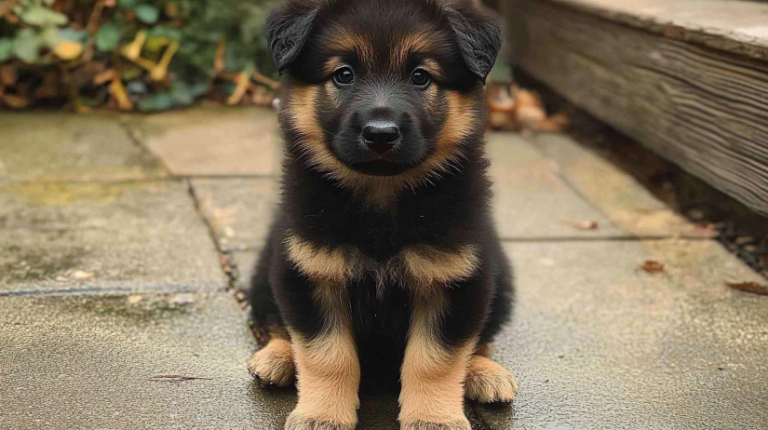When Do Puppies Stop Growing? A Complete Guide
As a proud pet parent, you’ve likely been captivated by your furry companion’s rapid growth. From tiny paws to bigger size, it’s amazing to see a puppy grow. Have you ever asked yourself, ‘At what point do puppies stop growing?” Exploring your dog’s growth journey is not only engaging but essential for their health.
Puppies grow a lot in their first six months, reaching nearly 60% of their adult height by four months. But, how long it takes for a puppy to reach full size varies by breed. Smaller breeds might be fully grown in 6-12 months, while larger breeds can take up to 24 months. Knowing these growth patterns helps you care for a healthy, happy pup.
Table of Contents
Understanding Puppy Growth Stages
Puppy growth is a fascinating journey, with each stage marked by unique developmental milestones. Understanding these growth stages can help you better support your furry friend’s health and well-being.

Breed: A Key Factor in Puppy Growth
One of the primary factors that influences puppy growth is their breed. Smaller dog breeds, such as Chihuahuas and Yorkies, tend to reach their full adult size much faster than larger breeds, such as Great Danes and Saint Bernards. On average, small breeds can reach their adult size between 10-12 months, while medium breeds generally finish growing by 12 months. Larger and giant breeds, on the other hand, may take up to 24 months to reach their full potential.
Genetics and Gender: Additional Influences
Aside from breed, a puppy’s genetics and gender can also play a role in their growth. Male puppies, for instance, often grow larger than their female counterparts. Additionally, certain genetic factors can predispose a puppy to faster or slower growth rates, which is something to keep in mind when monitoring your pup’s development.

By understanding the various factors that contribute to puppy growth, you can better predict your dog’s adult size and tailor their care accordingly. Regularly monitoring your puppy’s weight and growth milestones can help ensure they are on the right track to a healthy, happy life.
| Puppy Growth Stage | Typical Time Frame | Key Developments |
|---|---|---|
| Neonatal | Birth to 2 weeks | Completely dependent on mother, sleeping 90% of the time |
| Weaning | 3 to 8 weeks | Transitioning to solid food, developing social skills |
| Socialization | 4 to 12 weeks | Learning appropriate play behavior, experiencing fear responses |
| Rapid Growth | 4 to 6 months | Establishing hierarchy within their group, growing rapidly |
| Adolescence | 6 to 12 months | Very energetic, continued training and socialization needed |
| Social Maturity | 1 to 2 years | Reaching social maturity, ongoing training maintains a healthy relationship |
By understanding the various stages of puppy growth and the factors that influence it, you can provide your furry friend with the best possible care and support as they transition into adulthood.
Puppy Growth Chart (By Percentage)
Knowing how your puppy grows is key to their health. The American Kennel Club (AKC) has a puppy growth chart. It shows how different breed sizes grow at different ages. Let’s look at the growth percentages for each breed size:
- Small breed puppies (under 20 lbs) should reach 75% of their adult size by 6 months, 90% by 9 months, and 100% by 12 months.
- Medium breed puppies (21-50 lbs) should weigh around 66% of their adult weight by 6 months, 85% by 9 months, and 95% by 12 months.
- Large breed puppies (51-100 lbs) are expected to be about 60% of their adult weight at 6 months, 75% at 9 months, and 85% at 12 months.
- Giant breed puppies (over 100 lbs) should be at 50% of their adult weight by 6 months, 65% by 9 months, and 80% by 12 months.
Remember, these are just general guidelines. Puppies grow at different rates due to genetics, nutrition, and health. Using a puppy growth chart helps track your puppy’s growth. This ensures they hit the right growth milestones by breed size.
| Breed Size | 6 Months | 9 Months | 12 Months |
|---|---|---|---|
| Small (Under 20 lbs) | 75% | 90% | 100% |
| Medium (21-50 lbs) | 66% | 85% | 95% |
| Large (51-100 lbs) | 60% | 75% | 85% |
| Giant (Over 100 lbs) | 50% | 65% | 80% |
Understanding your puppy’s growth chart and puppy growth percentages helps monitor their development. This ensures they reach their full potential. It also helps spot any growth issues that need vet care.

When Do Puppies Stop Growing?
The time it takes for puppies to stop growing varies by breed. Small breed puppies grow the fastest, usually reaching full size in 6-12 months. Medium breeds grow up to 12 months, while large and giant breeds can take 18-24 months.
Small Breeds: Fastest to Reach Full Size
Small breeds like Chihuahuas, Yorkies, and Pomeranians grow quickly. They are often fully grown by 6-8 months. By 12 months, they have reached 100% of their adult weight.
Large and Giant Breeds: Slowest Growers
Large and giant breeds, like Great Danes and Mastiffs, grow much slower. They can take up to 24 months to reach full size. During the first 18 months, they may only reach 90% of their adult weight.
The “adolescent” age, between 8 months and 2 years, is challenging for puppies. They need extra attention, stimulation, and exercise during this time.
By watching your puppy’s growth and providing the right food and exercise, you can help them reach their full potential. This promotes a life filled with health and happiness.
Determining When a Puppy is Fully Grown
Knowing when your puppy has reached its full size is a big deal. There’s no one sign, but several things can tell you when they’re done growing.
Watching your puppy’s weight and growth is a good start. They grow fast from birth to 8 weeks, reaching about 60% of their adult height by 4 months. Then, they grow slower, finishing their growth in 12-18 months. Big breeds might take up to 2 years.
Feeling your puppy’s bones can also tell you something. As they grow, you’ll feel their growth plates closing. Also, their behavior and energy levels can show they’re growing up.
While vet visits and X-rays are best for knowing for sure, these tips can help you keep track. Paying attention to these signs ensures you care for them right as they grow up.
| Breed Size | Fully Grown Weight Range | Fully Grown Height Range |
|---|---|---|
| Toy | Less than 12 pounds | – |
| Small | 12-25 pounds | – |
| Medium | 21-50 pounds | 22-42 inches |
| Large | 50-100 pounds | – |
| Giant | Over 100 pounds | – |
Breed, genetics, and gender affect a puppy’s size. Males are usually bigger than females. Some breeds, like Great Danes, can take 2-3 years to reach their full size.
Factors That Can Stunt Puppy Growth
Puppy growth can be slowed down by several things. These include intestinal parasites, malnutrition, and congenital disorders. Knowing about these common issues is key to helping your puppy grow to their best.
Intestinal Parasites: A Common Culprit
Intestinal parasites like hookworms and roundworms can stop puppies from getting the nutrients they need. This can slow down their growth. It’s important to deworm your puppy regularly and check their feces often to keep these parasites away.
Malnutrition and Poor Diet
Good nutrition is vital for a puppy’s growth. Feeding them a high-quality puppy food gives them the vitamins and calories they need. A bad diet or not enough food can really slow down a puppy’s growth.
Congenital and Inherited Disorders
Some genetic conditions, like pituitary dwarfism and congenital liver shunts, can also slow down growth. These can be hard to spot and may need special vet care.
By knowing about these growth-stunting factors, you can help your puppy grow healthily. This way, they can reach their full size and potential.
when do puppies stop growing
Puppies stop growing at different times depending on the breed, Smaller breeds grow the fastest, reaching full size in 6-12 months. Larger breeds, however, may take up to 18-24 months to mature.
Smaller dogs usually stop growing between 6-12 months. Medium-sized dogs reach full size around 12 months. Large dogs stop growing at about 18 months, and giant breeds take up to 24 months.
Puppies grow the fastest between three and five months. Small breed puppies grow especially quickly. The adolescent stage, from eight months to two years, is challenging for owners.
Watching a puppy’s weight and growth milestones helps know when they’re done growing. A healthy diet is key during growth. Regular vet visits are also important to catch any growth issues early.
Puppy Growth Timeline
- Small dogs: Fully grown between 6-12 months
- Medium dogs: Typically reach full growth at around 12 months
- Large dogs: Usually stop growing at approximately 18 months
- Giant dogs: Can take up to 24 months to be fully grown
Tips for Supporting Healthy Puppy Growth
Raising a puppy is a rewarding journey that needs careful attention. By following a few key tips, you can help your puppy grow into a healthy, happy companion.
Proper Nutrition: Choosing the Right Puppy Food
Feeding your puppy the right food is key for their healthy growth. Choose puppy food that matches their age and needs. It should have the right mix of proteins, fats, carbs, vitamins, and minerals for their growth.
Monitoring Weight and Growth Milestones
It’s important to weigh your puppy regularly and track their growth milestones. Use breed-specific charts to see how they’re doing. If you detect any issues, consult your vet as soon as possible.
- Weigh your puppy weekly or biweekly to monitor their weight gain.
- Compare your puppy’s measurements to breed-specific growth charts to track their size and development.
- Discuss any growth concerns with your vet, who can provide personalized advice and recommendations.
By following these tips, you can help your puppy grow into a strong, vibrant companion. Remember, every pup is unique. Work closely with your vet to tailor your care to your puppy’s needs.
Conclusion
Puppy growth varies by breed, with smaller breeds maturing faster than larger ones. While most puppies reach adulthood by 12 months, some larger breeds may take up to 24 months to fully grow.
Key factors influencing growth include genetics, gender, and nutrition. Pet owners can support healthy development by monitoring weight and height, providing age-appropriate balanced diets, and avoiding overfeeding. Gradual exercise, especially for larger breeds, is vital to prevent joint issues and ensure proper growth.
Understanding your puppy’s growth needs helps them thrive, promoting a long and healthy life. Tailored care and attention during this phase are essential for raising a confident and well-developed adult dog.







